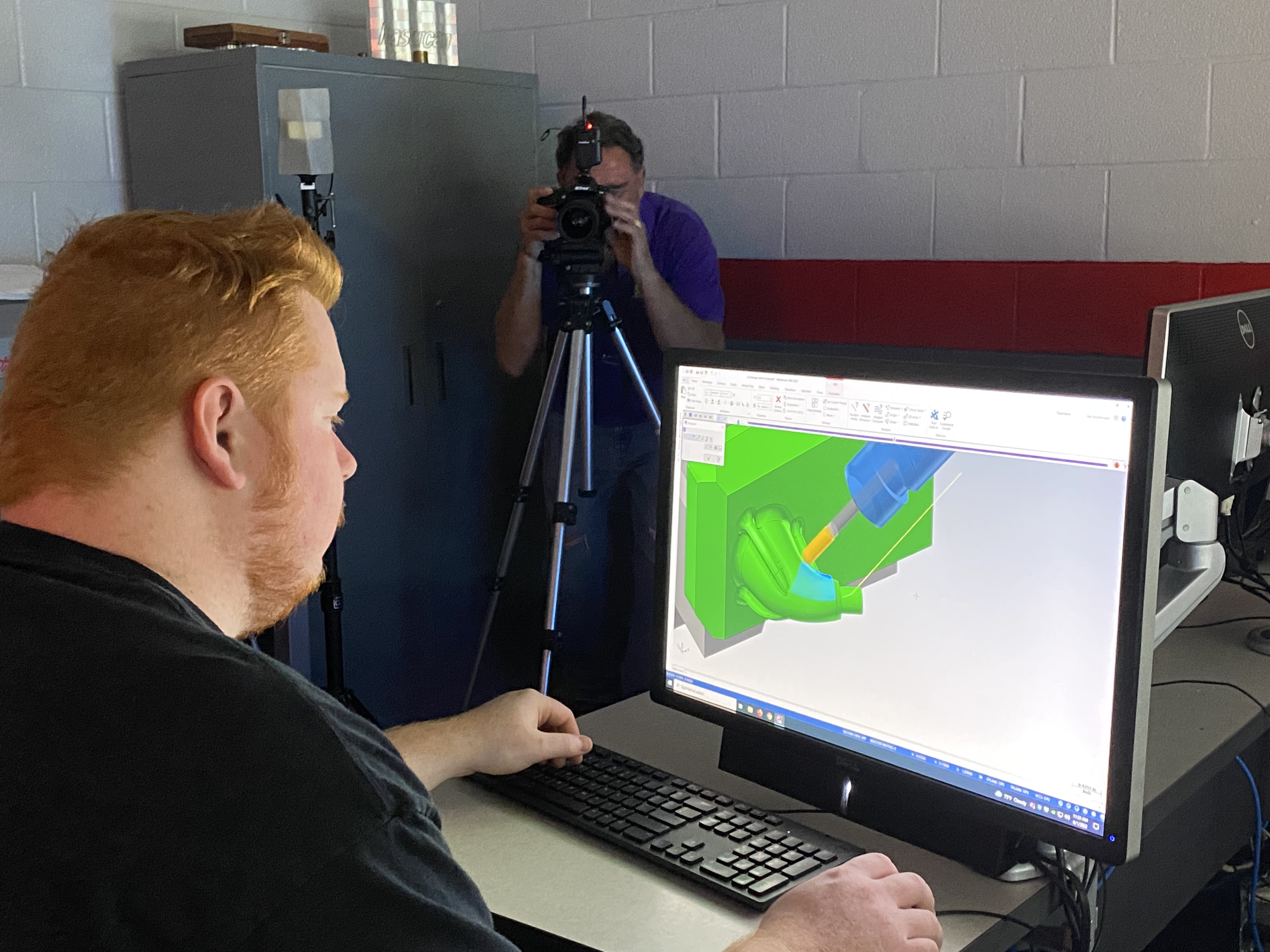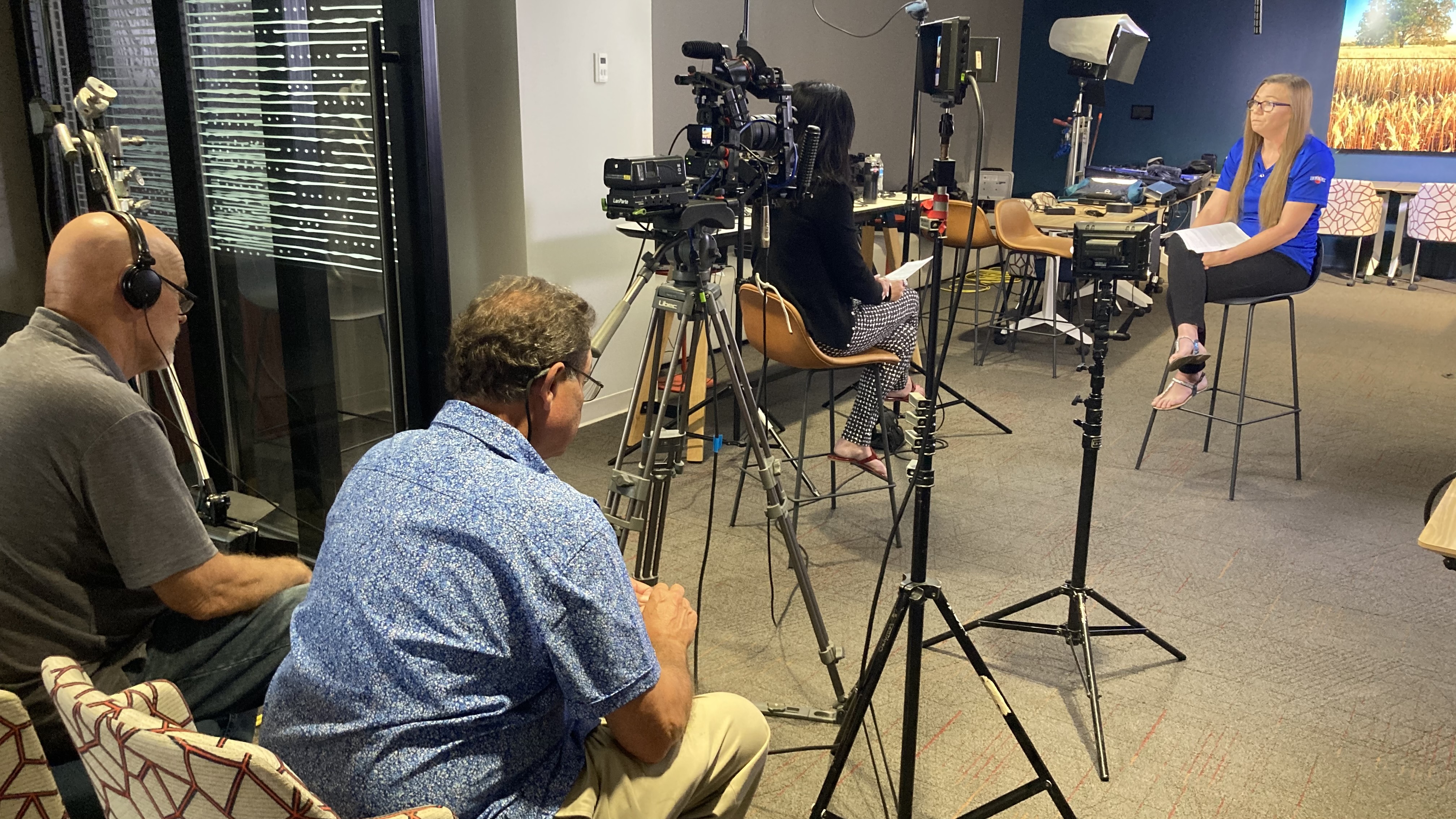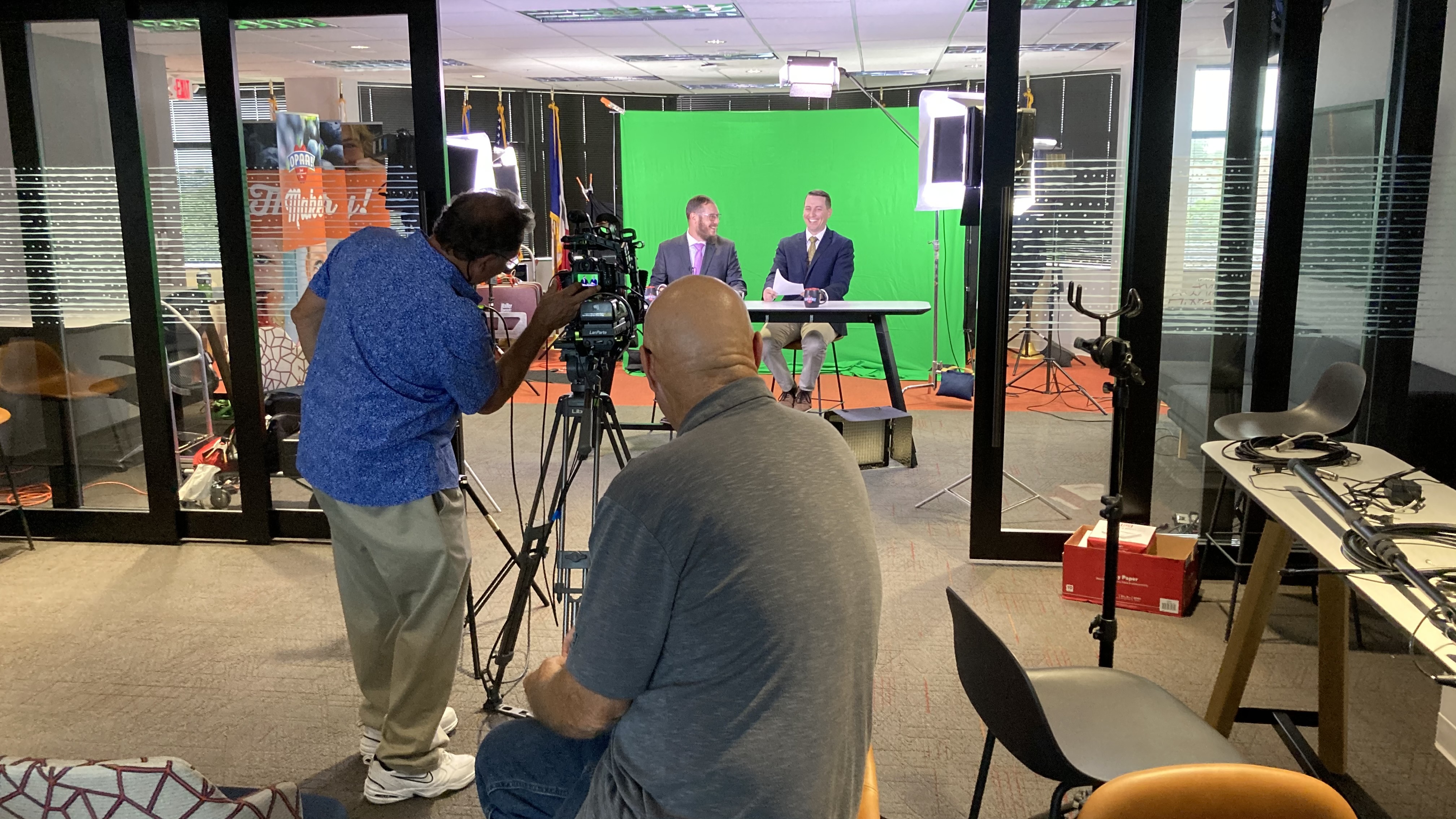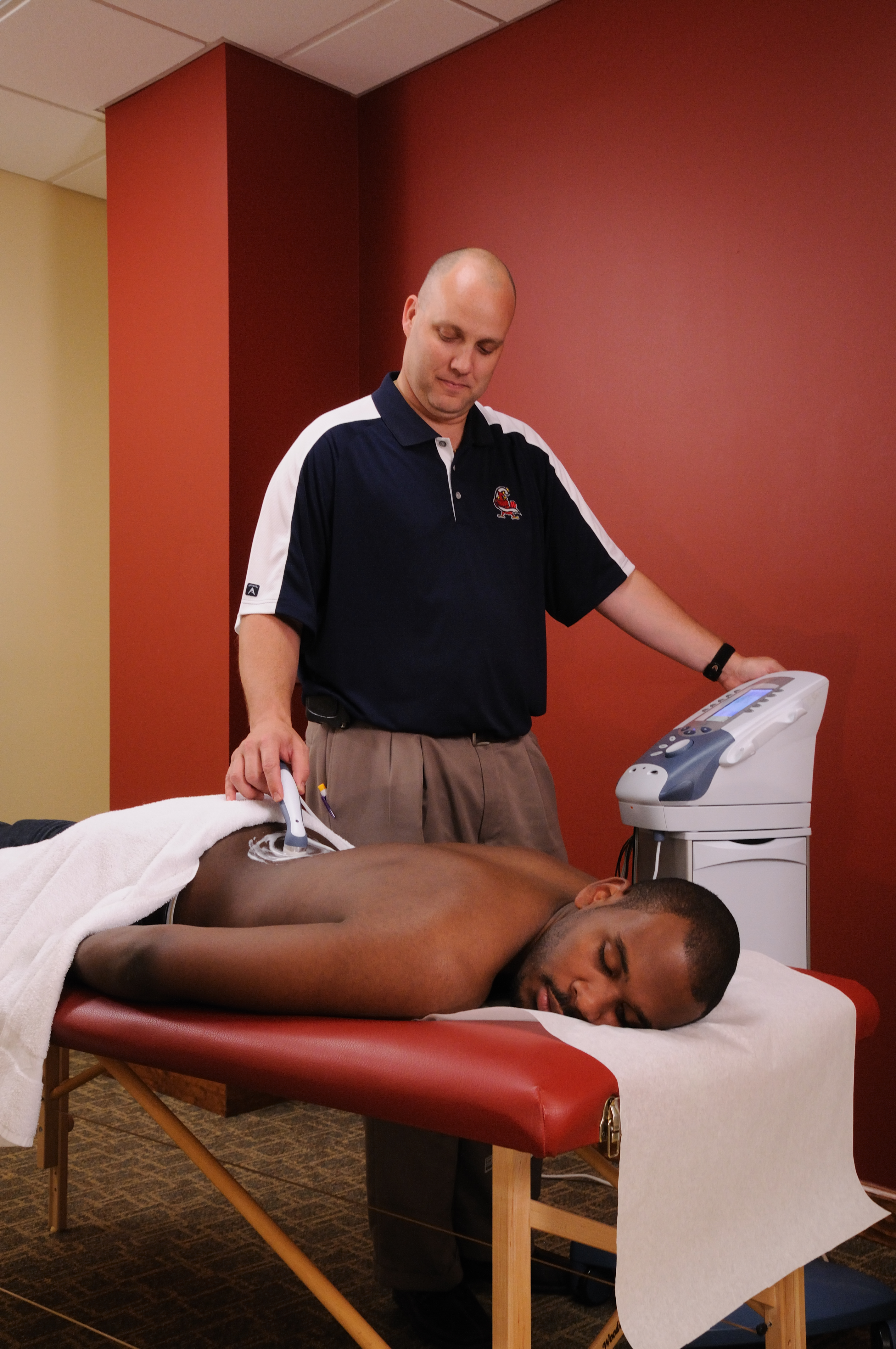Stream-It Video Webcasting
Your content online.
Whether its a corporate news event, ground breaking at a new site, for employees or for the general public: Stream-It enables immediate participation in your event.
Budget-friendly:
Stream-It brings the web conference directly to your contacts in Print, TV, Radio and Online.
Interactive: Asking questions online or a call-in allows direct communication and interaction.
Individually: Whether a closed user group, with or without prior accreditation in a virtual press conference or open – Stream-It can be implemented individually according to your requirements.
We provide many streaming technology solutions to increase the bandwidth quality and compression performance of your video stream. By using industry leading formats we constantly explore and test newer technology to create an economical web streaming solution for your specific needs.
Live video web streaming
From a simple presentations to a large scale productions, we can video stream and webcast your event live. Let us provide you with the correct technology solution.
On-Demand Streaming
Unique web visits can increase by replaying previously recorded live streams. You can also create and stream your entire Media libraries.
St Louis video web streaming coordinated and produced by local producer Mike Haller. A number of large corporate industrial firms needed to see images immediately on opposite ends of the United States. A web streaming video solution was the answer. The video clip above is a sample of the web streaming capabilities utilized.
Woodworking Journal – St. Louis Video Production
If you build it, they will come. Live video and on demand training and education on the web is the most productive and cost efficient.
What is Webcasting Video Streaming and How Do They Work?
Are you curious to learn what webcasting & video streaming are and how they can help you improve your business? This article will explain everything you need to know, so that you make the right decision for your next project. You will gain an understanding of each technology, and the benefits they offer. So, let’s get started!
Introduction to Webcasting & Video Streaming
Thanks to advances in technology, the internet has become a powerful platform for the delivery of all types of media, from text and images to audio, video and live streaming. Webcasting and video streaming allow for high quality multimedia delivery directly over the internet. By understanding what webcasting and video streaming are, you can use these two services to improve your online presence or utilize them in a professional capacity.
Webcasting is the process of broadcasting content over the internet to an unlimited audience viewing the broadcast on their individual devices. Video streaming involves decompressing data into packages that travel over networks so viewers can watch content simultaneously on their computer screens or mobile devices. Both webcasting and video streaming methods have become popular means of delivering multimedia quickly, easily and reliably without disrupting other internet activities such as browsing, searching and downloading data or applications.
The major difference between these two popular mediums lies in the source only: webcasts originate from one source file (live), while videos are streamed after being encoded for delivery by buffering speed technology that compensates for fluctuations in connection speed (recorded). Depending on your intended use case and requirements, each method could be beneficial for you but be sure to consider factors such as cost (billing method) so that you can choose efficiently with long term goals in mind when it comes time to deliver content quickly over the internet!
Benefits of Webcasting & Video Streaming
Webcasting and video streaming offer many benefits to businesses and individuals. These technologies make it easier for companies, organizations, and individuals to share live content with their audiences. Webcasting and video streaming can help grow business as well as improve customer experience.
When used properly, webcasting and streaming can allow businesses to increase their reach, build a stronger connection with their customers, display products or services in action, provide powerful visual images of events or activities, communicate new ideas quickly and effectively, raise brand awareness or promote products or services on various channels.
Businesses that understand the opportunity webcasting and streaming provides, can gain immense rewards from leveraging this technology correctly. It enables them to extend the reach of their message instantly without geographic limits or restrictions. Companies can webcast events happening anywhere in the world, reaching far greater audiences than were ever possible before these technologies were available.
Video content produced by a company is more engaging for viewers making it easier for them to process messages faster which increases an audience’s comprehension of complex concepts more easily than text based material alone often does. This enhances consumer engagement with a product which boosts sales performance because it creates improved recall among viewers that visit websites or stores after viewing content produced by the company’s webcasting activities.
Types of Webcasting & Video Streaming
Webcasting and video streaming allow individuals and organizations to share audio or visual content across networks, such as the Internet, that allows viewers to access a media file in real-time. Examples of webcasts include educational sessions, seminars, training sessions and remote lectures. These services can also be used to host events such as concerts, product launches and conferences. Streaming media refers to video that is accessed on demand.
The two main types of webcasting & video streaming include:
-Live streaming: This type of webcasting involves broadcasting live audio or visual content from one source over the Internet directly to multiple locations. Live streaming is available with any standard internet connection and offers a great deal of flexibility for streaming different types of content ranging from live music concerts, sports events or corporate seminars to medical conferences and political debates.
-On Demand Video Streaming: This type of webcasting service allows users to watch videos when they want by simply clicking a button on the website or mobile app offering the service. The user is able to pick exactly what they want, when they want it, without having to wait for a specific event start time. Popular services like Netflix and YouTube offer this type of viewing experience as well as many other sites that provide entertainment or instructional tutorials in this format.
Technical Requirements for Webcasting & Video Streaming
Anyone considering using webcasting or video streaming for their business should familiarize themselves with the technical requirements for both processes. Webcasting involves delivering video and audio streams via the internet in real-time, allowing remote participants to view and interact with presenters or speakers. Video streaming, on the other hand, requires users to download media files – such as videos – directly from a source before they can be watched.
There are several technical requirements that need to be met in order to successfully broadcast live events or stream archived media:
- Server requirements: A host streaming server is necessary to send audio/video streams out via the internet. An RTMP (Real Time Messaging Protocol) or HLS (HTTP Live Streaming) content delivery network is also required in order to support webcast/streaming on multiple viewing devices.
- Encoding software: The audio/video content needs to be encoded into a suitable format for streaming, usually using an encoder such as Wowza Media Systems Studio Pro, Adobe Flash Media Live Encoder (FMLE), OBS Studio (Open Broadcaster Software), etc.
- Viewer setup: For viewers participating in a webcast event, they will require either dedicated software applications that can access the stream or plug-ins installed on their computer or device (e.g., Adobe Flash Player). Those who wish to watch streamed media would need an appropriate viewer app equipped with playback capabilities (for example Windows Media Player for Windows PCs).
- Data transfer rate: Webcast broadcasting and video streaming necessitates high data transfer rates through both up-and-down links, measured as bits per second (bps). The actual value may vary depending on factors such as bandwidths available at each end of the link, audience numbers accessing your stream simultaneously etc., but typical bps values regularly range from 500kbps – 1000kbps.
Challenges in Webcasting & Video Streaming
While webcasting and video streaming provide many advantages compared to physically attending events, there can be challenges in the delivery. Web content delivery networks (CDNs) can help create a more reliable stream, with better SEO and higher interest that can lead to increased viewership, while improving customer satisfaction.
However, even with CDNs, streaming providers have experienced issues such as high latency and unexpected disruptions. These interruptions create a frustrating experience for viewers, who don’t always receive reliable or consistent experiences from their webcasts or video streams.
In addition to technical difficulties, concern users may have about the data collected by webcast and video streaming providers—such as internet service providers looking for user data—is another issue businesses must consider when hosting an event online. Security is a priority for any company engaging in digital communications activities like webcasting or video streaming. Companies should make sure they’re using secure protocols when sharing sensitive information to ensure their attendees’ privacy is respected and maintained.
Best Practices for Webcasting & Video Streaming
Organizations and individuals often use webcasting and video streaming services to communicate, educate and entertain audiences in real-time. There are many different types of webcasting & video streaming services available, allowing users to share audio/video content with larger audiences over the internet.
To ensure that you make the most of these services, it is important to understand the best practices for webcasting & video streaming.
Best practices for webcasting & video streaming include using high-quality audio and visuals, ensuring smooth playback at all times and delivering a consistent user experience across multiple platforms. It is also important to consider aspects such as bandwidth and latency issues when launching a stream, as well as providing adequate support during broadcasts to address potential technical problems quickly. Additionally, streamers should use analytical tools like encryption technology or analytics software solutions to better understand their audience’s experience before, during and after each broadcast.
By following these best practices for webcasting & video streaming, organizations can ensure that their broadcasts reach their intended audience as effectively as possible. Moreover, adopting an effective strategy for monitoring service performance allows organizations to discover potential problem areas in their current setup or troubleshoot any issues that arise during broadcasts. Ultimately, understanding these best practices can help organizations manage the quality of their broadcasts most effectively.
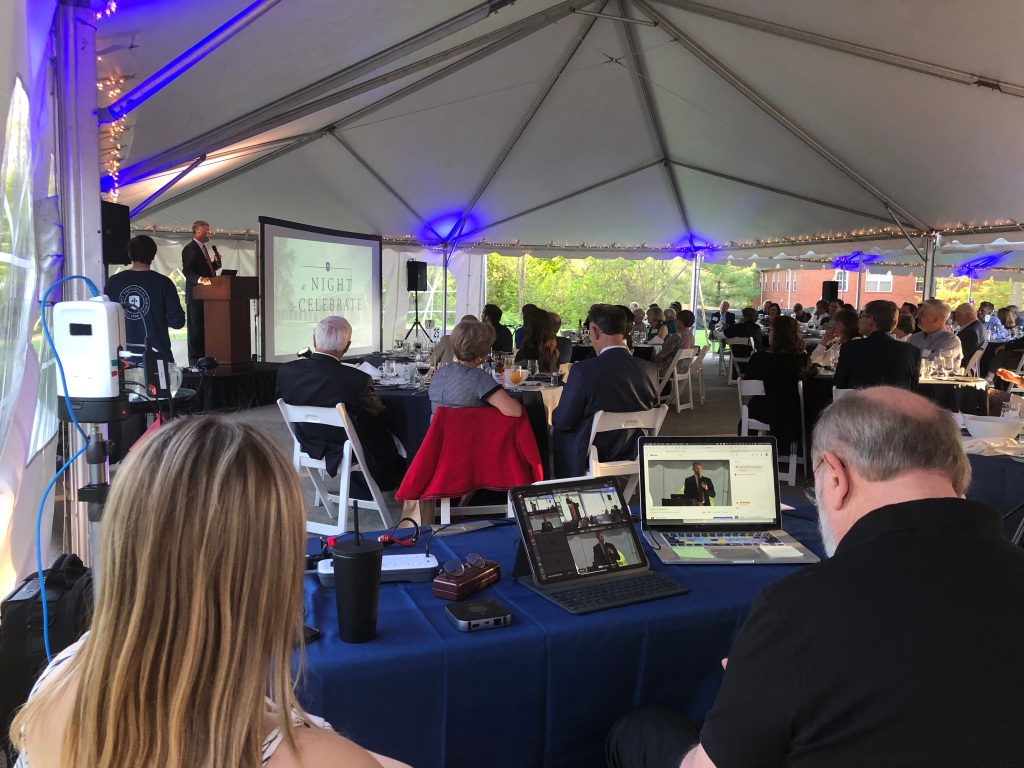
Use Cases for Webcasting & Video Streaming
Businesses and organizations around the world have used webcasting and video streaming services to stay connected and share their message with colleagues, customers, prospects, partners and other stakeholders. The use cases range from internal corporate communications such as town-hall meetings, sales training events, and product launches to external outreach such as webinars, seminars, conferences, live events promotion and more.
Both webcasting and video streaming are viable tools for any organization that wants to extend its reach without the hassle of travel costs or geographical restrictions. No matter what size of an organization you have or what industry you operate in — these tools can help you engage your audience. Here are some popular use cases for webcasting & video streaming:
1. Corporate Communications: From quarterly all-hands meetings to employee announcements — webcasts offer a cost-effective way to broadcast key corporate messages & company updates in real-time with no audience limit.
2. Learning & Education: From sales training courses to customer success tutorials — video streaming technology is the perfect medium for delivering on-demand instruction anytime anywhere for learners across departments & locations.
3. Event Promotion: Organizations use video streaming technology to reach a large number of viewers both live & on-demand at minimal cost from anywhere in the world—promote upcoming events or conferences in places with lower turnout while extending your event’s reach beyond your local market with online participants via webcasts/live streams!
4. Online Events: Hosting an online event? Use video streaming platforms like Zoom or GoToWebinar so that people “attend” virtually instead of physically traveling by air or road which nowadays carries higher risks owing to travel restrictions! Stream interactive online panels or workshops via live stream across multiple platforms at the same time!
5. Customer Support: Live chat support often can be improved by providing customers visual instructions rather than written instructions which is not effective sometimes when complicated topics need explanation—share screen directly with customers through video conferencing software like Webex for more personalized assistance!
Both webcasting and streaming video are cost-effective ways to get content out to a wide audience.
They provide real-time delivery of content with no wait time for download or installation.
Webcasting generally refers to a live event broadcast over the web, while streaming media refers to the delivery of pre-recorded content from a central source to multiple locations. Both technologies have their advantages and disadvantages, but both can be useful tools for businesses that want to reach a large audience quickly and easily.
314-913-5626
Mike Haller, St Louis Video Producer
St Louis Video Production
stlouisvideoproduction@gmail.com



































